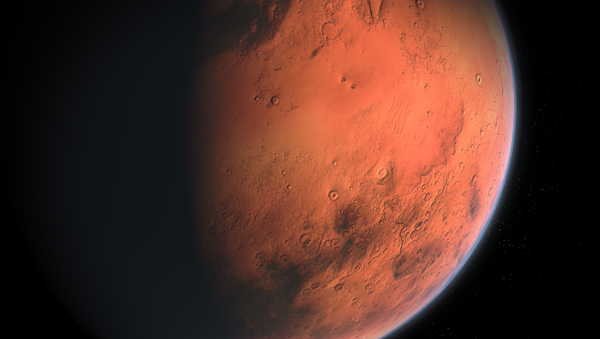Roughly 65 million miles from Earth, InSight has still got another 5 million to go before it gets to Mars, which the countdown on NASA's site says will happen in 32 days on November 26, 2018.
On Monday, NASA's Jet Propulsion Laboratory posted a photo taken by InSight of its destination:
The Pale Red Dot
— NASA JPL (@NASAJPL) October 22, 2018
Here’s the first picture of #Mars taken by a CubeSat, thanks to our tiny #MarCO spacecraft, currently traveling to the planet behind @NASAInSight: https://t.co/ZdzfLL3eYu pic.twitter.com/332N1Ysldi
With its two solar panels deployed, the craft is 19 feet 8 inches long and 5 feet 1 inch wide, weighing in at 794 pounds. It's also got a 5-foot-9-inch robotic arm on top that it can use to deploy instruments and take photos.
In 💯 days, I’m scheduled to land on #Mars. My touchdown is set for November 26, making the days around the Thanksgiving holiday extra memorable this year. No other mission has done what I’ll be doing. Learn how I’ll study Mars’ deep interior: https://t.co/nCryBG5VlL pic.twitter.com/yqmM8cHQua
— NASAInSight (@NASAInSight) August 18, 2018
InSight is on a six-month trip to the Red Planet, having launched from Vandenberg Air Force Base on board an Atlas V-401 rocket on May 5. NASA notes this was the first interplanetary launch from the United States' West Coast.
Once on Planet Four, it'll take InSight about 30 days to deploy its instruments and begin day-to-day science activities.
After that, it'll use very precise equipment to measure the speed at which marsquakes (those are earthquakes but on Mars) spread through planet, including how fast they bounce off the planet's core. It'll also monitor the minute "wobble" in the planet's orbit using two X-band antennas called RISE (Rotation and Interior Structure Experiment), a task that might take years to complete. Together, these measurements should tell scientists what the Martian center is like, phys.org reported on Thursday.
InSight also carries HP3 (Heat Flow and Physical Properties Package): a spike on a 16-foot-long tether, which will bury itself deep into the Martian soil. Embedded with heat sensors, HP3 will look for heat trapped inside the planet from its initial formation 4.6 billion years ago. That will tell scientists a lot about the planet's origins and history, and help them to understand more about Martian geology, including whether it ever had liquid water.
Accompanying InSight to Mars are two briefcase-sized mini-spacecraft called Mars Cube One, or MarCO. NASA notes that they will test miniaturized deep space communication equipment and hopefully lead to advances for future missions.



